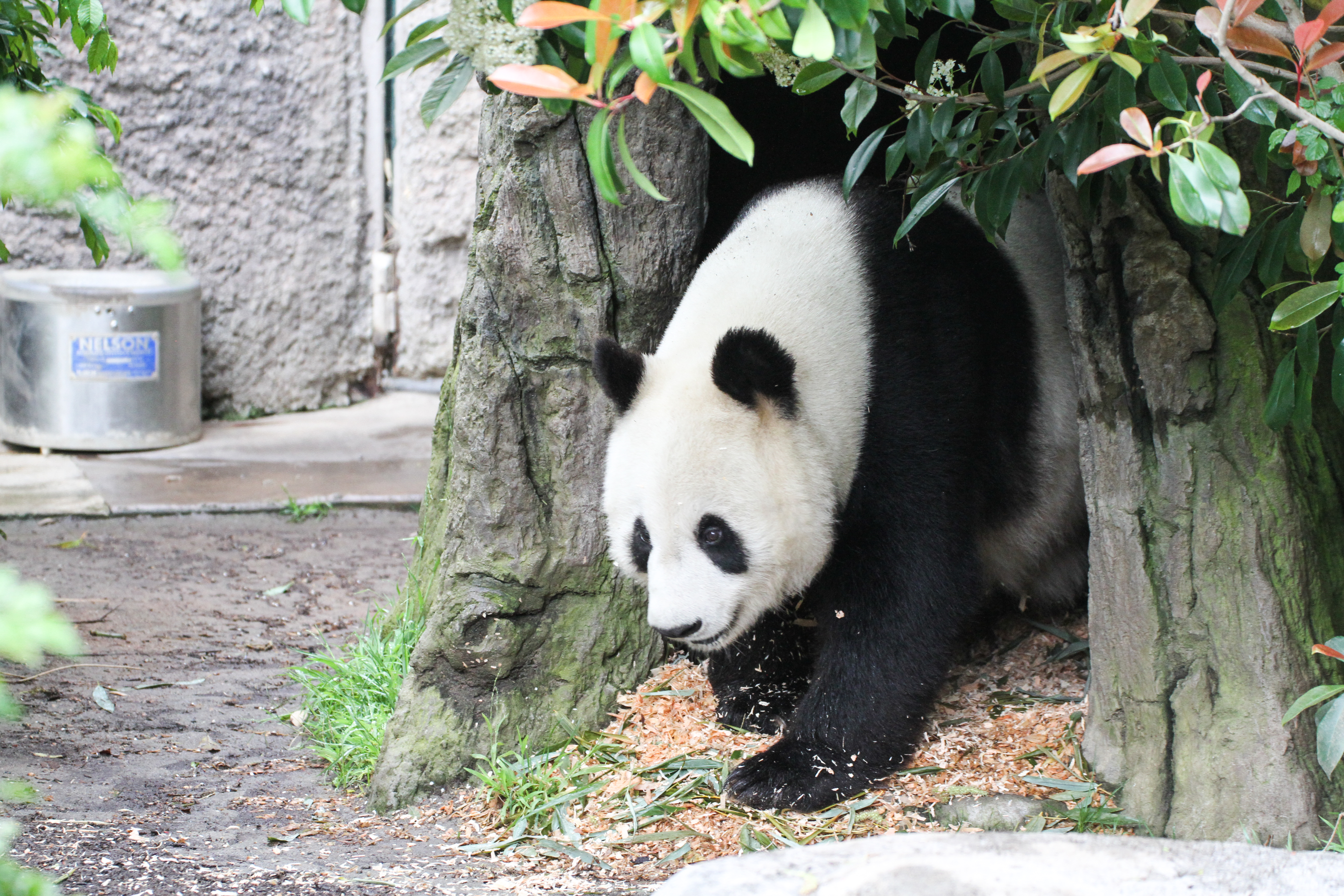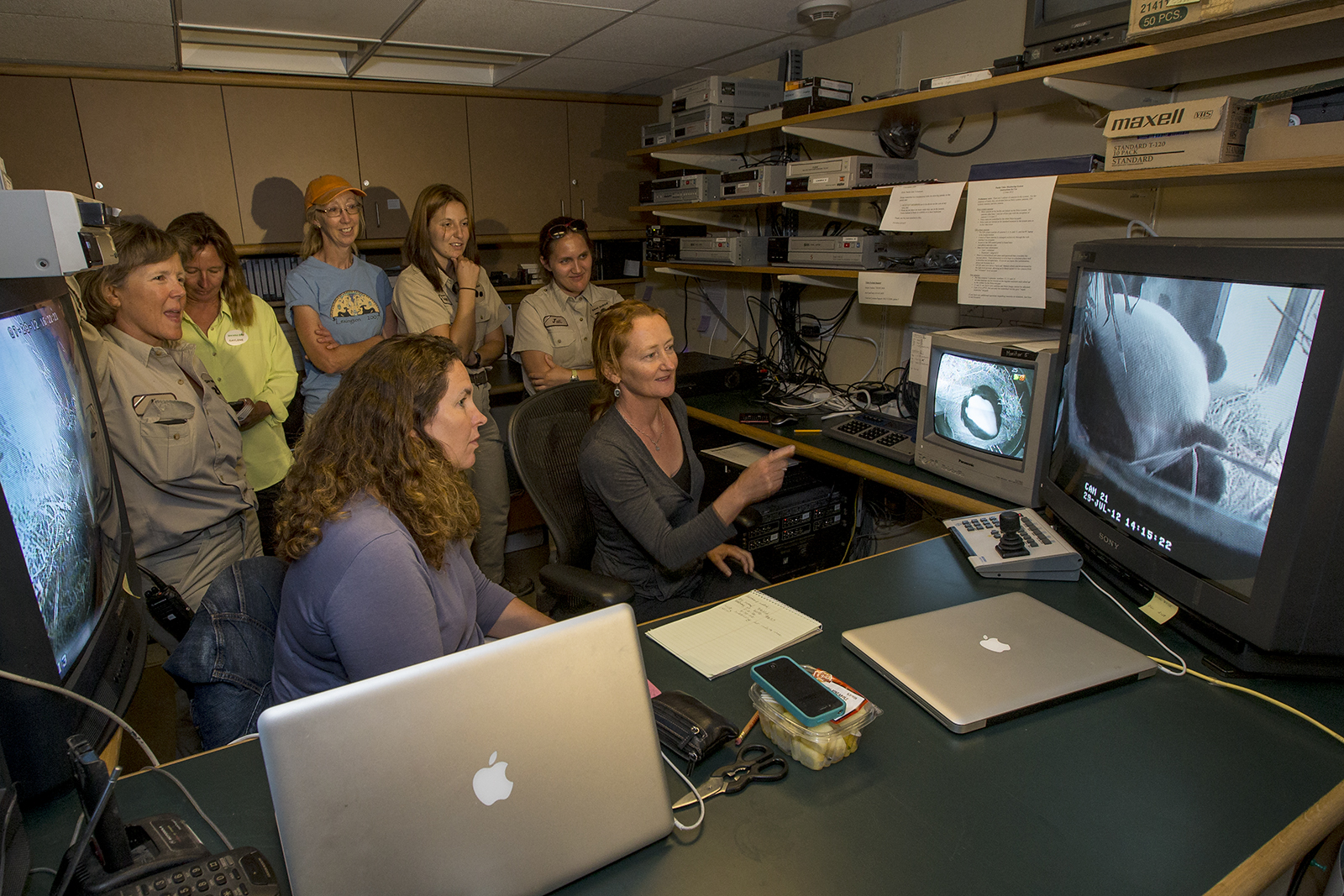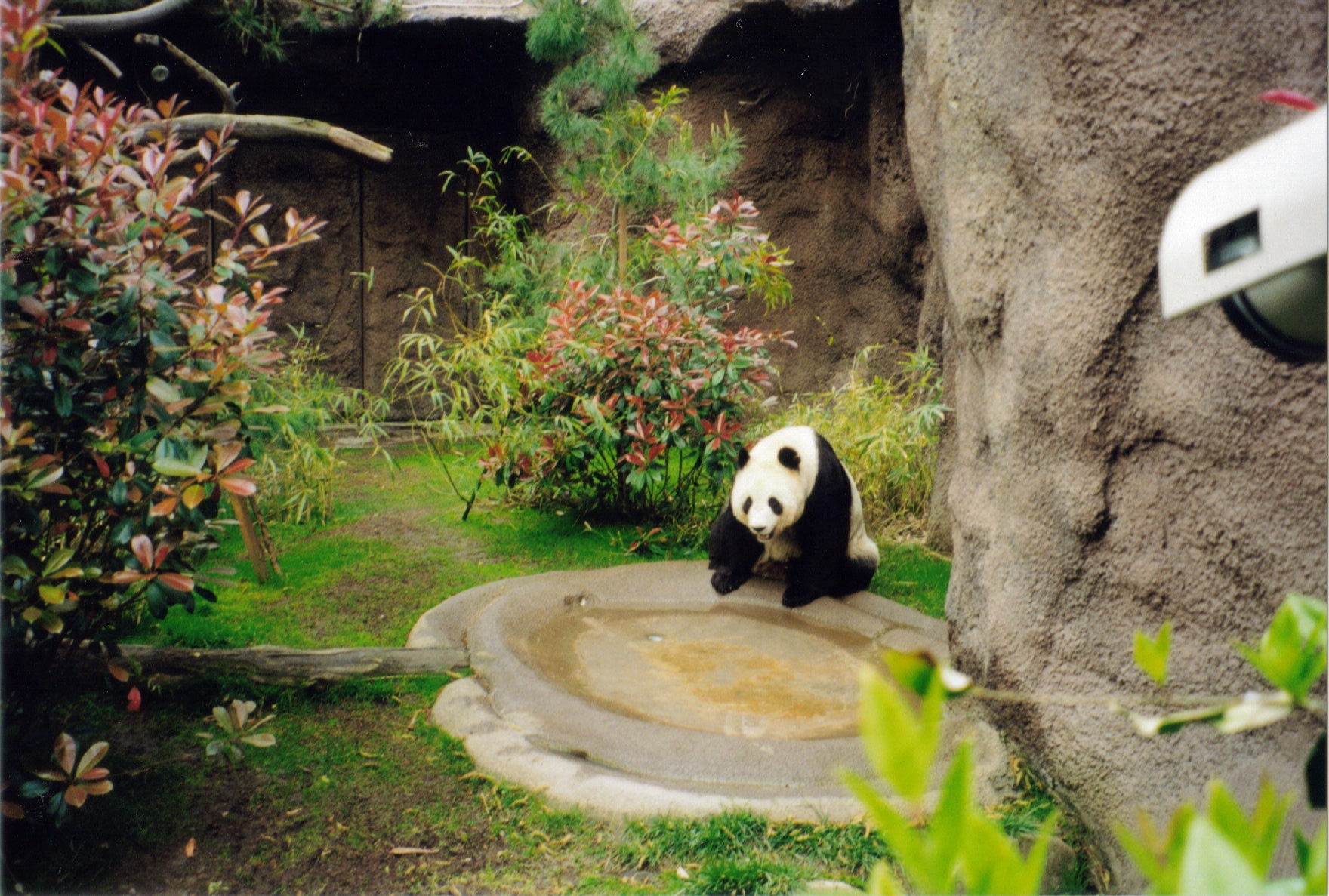Love is in the San Diego air

Today marked the first day of “pen swapping” for Bai Yun and Gao Gao. Pen swapping simply means that we put Gao Gao in Bai Yun’s exhibit, and Bai Yun in Gao Gao’s exhibit. This simple exchange tells us a lot about where Bai Yun is in her estrus cycle, and how interested Gao Gao is in Bai Yun. After observing both of them quietly explore, olfactory investigate and scent mark, it is clear that love is in the air, but we’re not quite there yet!
Giant pandas are solitary in the wild, and the coordination of courtship and breeding is dependent on communication at a distance via the exchange of olfactory (scent) and acoustic (vocalizations) cues between males and females. Over the years, researchers from the San Diego Zoo Institute for Conservation Research have documented the specific information conveyed by both scent and vocal signals, and we now know that pandas can determine the age, sex, and reproductive status of other giant pandas through these signals. Scent is the primary form of communication during the early phase of estrus. It serves to advertise of the identity of giant pandas prior to any face-to-face meetings. Through the inspection of scent marks left on trees, rocks, and the ground, pandas can assess other individuals and determine whether or not to follow these “scent trails” and pursue courtship. Our observations of Bai Yun have shown that scent marking typically reaches its peak of expression about 3-5 days prior to ovulation. In the wild, this peak in scent marking would coincide with a relative convergence of male and female pandas, and presages a switch to a the vocal signals that characterize courtship communication during the face-to-face encounters that are typical during the two to three day period that the female is receptive to breeding.
Over the years, we have fine-tuned our management of the panda breeding season. We use a number of techniques to assess Bai Yun’s estrus status, and Gao Gao’s interest in Bai Yun, as well as his motivation to breed. Pen swapping remains one of our most informative, and simple techniques, providing much insight and potentially priming both bears for what (we hope) is just around the corner.
Article by Megan Owen (A conservation program specialist at the San Diego Zoo Institute for Conservation Research)
Source: www.sandiegozoo.org
Photo credit: Rita Petita @ flickr









